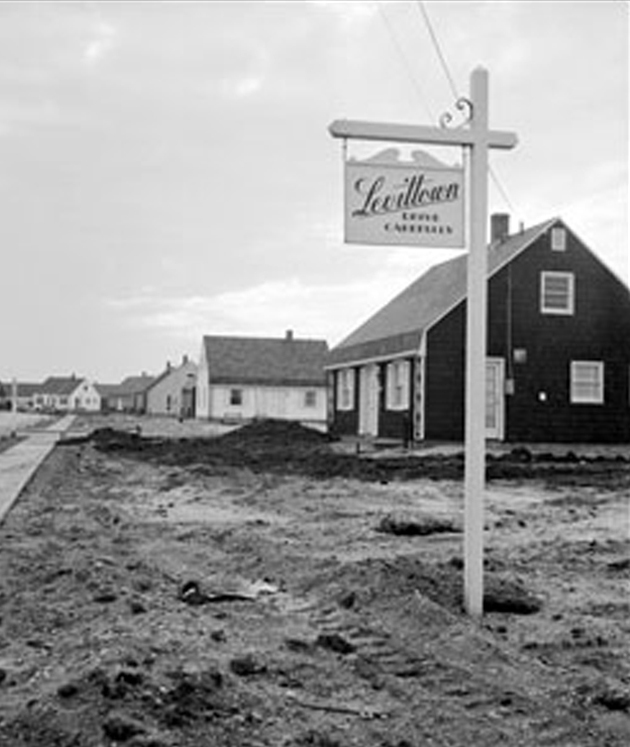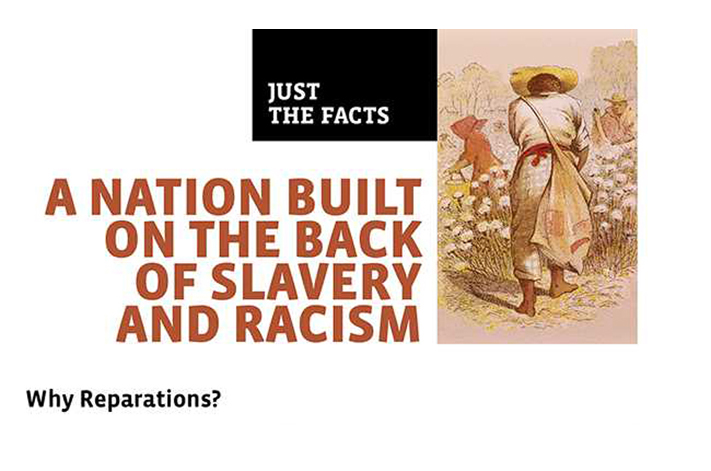Project Description
All of us want the best for our children. We work hard to earn a living. We want to provide — to nourish and nurture our offspring. We seek little more than access to an excellent education, in a neighborhood that fosters consideration. Yet, regardless of what we do, there remains a racial divide. Why? Without public policies that support all our families, segregation survives and our youth do not have a chance thrive.
Public Housing: Government-Sponsored Segregation
By the mid-1930s the government began to lure white families out of public housing with federally insured mortgages that subsidized relocation to new single-family homes in the suburbs. With Federal Housing Administration (FHA) and then, after World War II, Veterans Administration (VA) guarantees, white middle-class families could buy suburban homes with little or no down payments and extended 30-year amortization schedules. Monthly charges were often less than rents the families had previously paid to housing authorities or private landlords..[2]
The government had an explicit policy of not insuring suburban mortgages for African Americans. In suburban Nassau County, just east of Queens, for example, Levittown was built in 1947: 17,500 mass-produced two-bedroom houses, requiring nothing down and monthly payments of about only $60..[3] (This was less than the approximately $75 unsubsidized charge in Woodside Houses for apartments of comparable size..[4]) At the FHA’s insistence, developer William Levitt did not sell homes to blacks, and each deed included a prohibition of such resales in the future.[5]
Of 300 large subdivisions built from 1935 to 1947 in Queens, Nassau, and Westchester counties in New York, 83 percent had racially restrictive deeds, with preambles like “Whereas the Federal Housing Administration requires that the existing mortgages on the said premises be subject and subordinated to the said [racial] restrictions … [except for] domestic servants of a different race domiciled with an owner or tenant….” [6]
If a black family could afford to buy into a white neighborhood without government help, the FHA would refuse to insure future mortgages even to whites in that neighborhood, because it was now threatened with integration The federal government was determined to prevent school integration as well...
If a black family could afford to buy into a white neighborhood without government help, the FHA would refuse to insure future mortgages even to whites in that neighborhood, because it was now threatened with integration. [7] The federal government was determined to prevent school integration as well. Whole neighborhoods could be deemed ineligible for mortgage guarantees because, as the FHA underwriting manual stated, where children “are compelled to attend school where the majority or a goodly number of the pupils represent a far lower level of society or an incompatible racial element, the neighborhood under consideration will prove far less stable and desirable than if this condition did not exist.” [8]
These federal policies of racial segregation were applied not only in New York but nationwide. Pruitt-Igoe homes in St. Louis, Missouri, for example, became a national symbol of dysfunctional public housing in the 1960s-high-rise towers packed with welfare-dependent, African American, barely literate single parents, and their gang-member children. Conditions were so bad that the federal government evicted all residents and dynamited the 33 towers in 1972. [10][/fusion_builder_column_inner]
But few knew the rest of the St. Louis public-housing story. When federal public-housing funds first became available during the New Deal, St. Louis razed a racially integrated low-income neighborhood-its population was about three-quarters white and one-quarter black-to construct a whites-only housing project in its place. The project, Clinton-Peabody, was a low-rise development for two-parent families with steady employment, similar to the Woodside Houses. The Clinton-Peabody project remained predominantly white until the late 1950s when, as in Woodside, early white residents relocated to suburbs, many with the assistance of FHA- and VA-insured mortgages that were explicitly racially exclusive. The Clinton-Peabody project then filled with low-income, welfare-dependent African Americans. In New York, middle-class public housing for whites like the Klein family lasted a bit longer than in St. Louis. But then in the late 1960s, the New York City Housing Authority announced that tenant selection would no longer “deal with the morals of the applicants” and that it would abandon previous requirements of employment, stability, and orderliness. [12] Single-parent black and Puerto Rican welfare recipients replaced white, middle-class tenants. In 1968, the Housing Authority agreed to accept federal subsidies for Woodside Houses and ceased requiring rents to cover the full cost of apartments. The authority evicted tenants whose incomes were too high and who refused to leave on their own. [13] Economically and socially distressed tenants, with unruly teenagers, moved into and were concentrated in Woodside Houses and other once-middle-class projects, leading to a deterioration in the upkeep-and to drastically different needs of students attending neighborhood schools. By the early 1970s, with families like the Kleins now gone from Woodside Houses, the project’s Tenants Association made frequent complaints to the authority like this: Both the Manager and the tenants strongly object to the current tenant selection policies. Good families continue to move out, only to be replaced with multi-problem families, many with low living standards. Vandalism, narcotics activity and anti-social behavior continue to plague the project. … Mainly white families are moving out and are being replaced by black and hispanic families. [14] Whereas in the mid-1950s, most New York public-housing tenants were white, today they are only 5 percent white, as the decampment of middle-class families to segregated suburbs has been completed. [15] The public and media stereotype of project residents has become one of entrenched poverty and social dysfunction. By 1973, President Richard Nixon could describe such projects as “monstrous, depressing places-rundown, overcrowded, crime-ridden.” [16] Although housing authorities nationwide had ceased purposefully segregating projects in the last quarter of the 20th century, they never took action to reverse the effect of previous policies. In 1984, The Dallas Morning News sent reporters to federally funded projects in 47 cities. They found that the nation’s nearly ten million public-housing residents were still almost always segregated by race. The few remaining predominantly white projects had superior facilities, amenities, services, and maintenance in comparison to predominantly black projects. [17] The result was a one-two punch. With public housing, federal and local governments increased the isolation of African Americans in urban ghettos, and with mortgage guarantees, the government subsidized whites to abandon urban areas for the suburbs. The combination was largely responsible for creating the segregated neighborhoods and schools we know today, with truly disadvantaged minority students isolated in poor, increasingly desperate communities where teachers struggle unsuccessfully to overcome their families’ multiple needs. Without these public policies, the racial achievement gap that has been so daunting to Joel Klein and other educators would be a different and lesser challenge. -R.R.
Government Sponsored Segregation References
.[2] Kenneth T. Jackson. 1985. Crabgrass Frontier. New York: Oxford University Press, passim, especially pp. 204-206.
[3] Lizabeth Cohen. 2003. A Consumers’ Republic. New York: Vintage Books; June Williamson. 2005. “Retrofitting ‘Levittown.'” Places Journal 17 (2). http://escholarship.org/uc/item/0r57v5j3. Bruce Lambert. 1997. “At 50, Levittown Contends With Its Legacy of Bias.” The New York Times, December 28. http://www.nytimes.com/1997/12/28/nyregion/at-50-levittown-contends-with-its-legacy-of-bias.html. Jonathan Yardley. 2009. “Jonathan Yardley on ‘Levittown.’ What Happened when a Black Family Tried to Live the Suburban American Dream.” The Washington Post, February 15. http://www.washingtonpost.com/wp-dyn/content/article/2009/02/12/AR2009021203324_pf.html
[4] New York City Housing Authority. 1953. MASTER MANAGEMENT RESOLUTION ESTABLISHING POLICIES AND STANDARDS TO GOVERN THE ADMINISTRATION OF THE PERMANENT LOW RENT PUBLIC HOUSING PROJECTS DEVELOPED OR TO BE DEVELOPED UNDER PARTS I, II, AND III OF THE CITY-AIDED PROGRAM, WOODSIDE HOUSES, SCHEDULE A, MINIMUM MONTHLY RENTS.” New York City Housing Authority Archives (LaGuardia Community College), Box # 0079B3 Folder # 02; Folder Title: OFFICE OF THE SECRETARY-MINUTES. Date (Range): January 1953–1953.
[5] Kenneth T. Jackson. 1985. Crabgrass Frontier. New York: Oxford University Press, passim, especially pp. 234-241.
[6] John P. Dean. 1947. “Only Caucasian: A Study of Race Covenants.” The Journal of Land & Public Utility Economics 23 (4), November: 428-432.
[7] For one of many examples of FHA policies, see Federal Housing Administration. 1935. Underwriting Manual: Underwriting and Valuation Procedure Under Title II of the National Housing Act. June 1, sections 309-312.
[8] Excerpts of the 1938 FHA Underwriting Manual, reproduced in June Manning Thomas and Marsha Ritzdorf, eds. 1997. Urban Planning and the African American Community: In the Shadows. Sage Publications, pp. 282-284.
[9] Arnold R. Hirsch. 2000. “Choosing Segregation. Federal Housing Policy Between Shelley and Brown.” In John F. Bauman, Roger Biles, and Kristin M. Szylvian. From Tenements to the Taylor Homes. In Search of an Urban Housing Policy in Twentieth Century America. University Park, Pennsylvania: The Pennsylvania State University Press: 206-225, 208.
[10] Tim O’Neil. 2010. “A Look Back: Pruitt and Igoe Started Strong, But in the End Failed.” St. Louis Post-Dispatch, July 25. http://www.stltoday.com/news/local/metro/a-look-back-pruitt-and-igoe-started-strong-but-in/article_e2a30e7c-f180-5770-8962-bf6e8902efc1.html
[11] At the time, federal officials made little or no objection to segregation; liberals in the national administration only attempted to ensure that housing was constructed not only for whites but in separate projects for blacks as well. So when federal officials objected to the St. Louis plan, the city satisfied Washington by proposing an additional blacks-only project removed from the white one, but also in a previously integrated area. This met the government’s conditions for funding. The segregated projects were opened in 1945 with preference for veterans. Joseph Heathcott. 2011. “‘In the Nature of a Clinic.’ The Design of Early Public Housing in St. Louis.” Journal of the Society of Architectural Historians 70 (1), March: 82-103.[12] Nicholas Dagen Bloom. 2008. Public Housing that Worked. New York in the Twentieth Century. Philadelphia: University of Pennsylvania Press, 209.
[13] A Housing Authority proposal explains the reasons for the conversion.
New York City Housing Authority. 1968. “DEVELOPMENT PROGRAM FOR CONVERSION OF CITY PART II PROJECTS TO THE FEDERALLY ASSISTED PROGRAM.” New York City Housing Authority Archives (LaGuardia Community College), Box # 0085C6 Folder # 17; Folder Title: RESEARCH & POLICY DEVELOPMENT-CONVERSION OF CITY II TO FED PROGRAM–DEVELOP PROG, CONSOL PROJS; EAST GDNS; SHEEPS BAY HS; SO BEACH HS, WOOD HS, COL PARK;SITE PHOTOS TO PHOTO COLL. Date (Range): 1968.
New York City still retained some responsibility for maintenance after the conversion was completed.
New York City Housing Authority. 1969. “Repair of Peripheral Sidewalks at former City-aided Projects transferred to the Federal program.” New York City Housing Authority Archives (LaGuardia Community College), Box # 0090A3 Folder # 32; Folder Title: WOODSIDE HS;CORRESP . Date (Range): January 1969.
[14] New York City Housing Authority. 1973. “Project Survey Report, Specific Items, Woodside Houses,” 3/8/73. New York City Housing Authority Archives (LaGuardia Community College), Box # 0067A2 Folder # 15; Folder Title: WOODSIDE HOUSES-MSGRS + SUPERINTENDENTS MEETINGS;PROJECT SURVEY RPTS; INCIDENT RPTS. Date (Range): 1959-75; New York City Housing Authority. 1974. “Project Survey Report, Specific Items, Woodside Houses,” May 28. New York City Housing Authority Archives (LaGuardia Community College), Box # 0067A2 Folder # 15; Folder Title: WOODSIDE HOUSES-MSGRS + SUPERINTENDENTS MEETINGS;PROJECT SURVEY RPTS; INCIDENT RPTS. Date (Range): 1959 –1975.
[15] Data provided by New York City Housing Authority, e-mail, May 29. 2012.
[16] Nicholas Dagen Bloom. 2008. Public Housing that Worked. New York in the Twentieth Century. Philadelphia: University of Pennsylvania Press, p. 207.
[17] Craig Flournoy and George Rodrigue. 1985. “Separate and Unequal: Illegal Segregation Pervades Nation’s Subsidized Housing.” The Dallas Morning News, February 10.
Richard Rothstein is a Prospect contributing editor, a research associate at the Economic Policy Institute, and senior fellow at the Chief Justice Earl Warren Institute on Law and Social Policy at U.C. Berkeley School of Law.
This piece was reprinted by EmpathyEducates with permission or license. We thank The American Prospect and the Author, Richard Rothstein. We are grateful for their kindness, observations, research and commitment to the most vital conversations.











